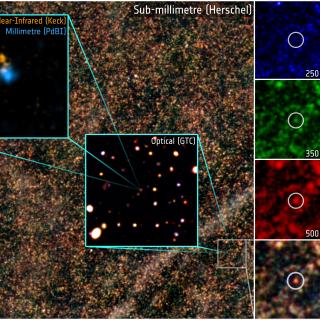Bibcode
Pearson, C.; Lim, Tanya; North, Chris; Bendo, George; Conversi, Luca; Dowell, Darren; Griffin, Matt; Jin, Terry; Laporte, N.; Papageorgiou, Andreas; Schulz, Bernhard; Shupe, Dave; Smith, Anthony J.; Xu, Kevin
Referencia bibliográfica
Experimental Astronomy, Volume 37, Issue 2, pp.175-194
Fecha de publicación:
7
2014
Revista
Número de citas
27
Número de citas referidas
25
Descripción
The different algorithms appropriate for point source photometry on data
from the SPIRE instrument on-board the Herschel Space Observatory,
within the Herschel Interactive Processing Environment (HIPE) are
compared. Point source photometry of a large ensemble of standard
calibration stars and dark sky observations is carried out using the 4
major methods within HIPE: SUSSEXtractor, DAOphot, the SPIRE Timeline
Fitter and simple Aperture Photometry. Colour corrections and effective
beam areas as a function of the assumed source spectral index are also
included to produce a large number of photometric measurements per
individual target, in each of the 3 SPIRE bands (250, 350, 500 μm),
to examine both the accuracy and repeatability of each of the 4
algorithms. It is concluded that for flux densities down to the level of
30mJy that the SPIRE Timeline Fitter is the method of choice. However,
at least in the 250 and 350 μm bands, all 4 methods provide
photometric repeatability better than a few percent down to at
approximately 100mJy. The DAOphot method appears in many cases to have a
systematic offset of ˜8 % in all SPIRE bands which may be
indicative of a sub-optimal aperture correction. In general, aperture
photometry is the least reliable method, i.e. largest scatter between
observations, especially in the longest wavelength band. At the faintest
fluxes, <30mJy, SUSSEXtractor or DAOphot provide a better alternative
to the Timeline Fitter.
Proyectos relacionados

Formación y Evolución de Galaxias: Observaciones Infrarrojas y en otras Longitudes de Onda
Este grupo desarrolla varios proyectos extragalácticos en diferentes rangos del espectro electromagnético utilizando satélites y telescopios en tierra para estudiar la evolución cosmológica de las galaxias y el origen de la actividad nuclear en galaxias activas. En el aspecto instrumental, el grupo forma parte del consorcio internacional que ha
Ismael
Pérez Fournon